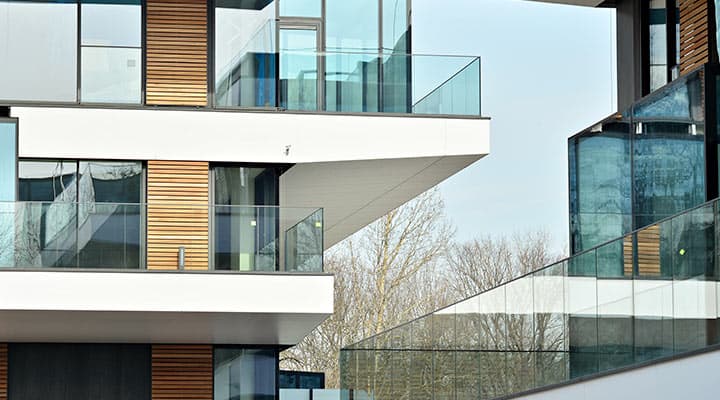Glass balustrades have become a fixture in contemporary design, merging functionality and aesthetics to add a touch of modern elegance to both residential and commercial spaces. While their beauty is undeniable, what sets them apart is their inherent durability and safety features – specifically, the use of toughened and laminated glass, known as ESG VSG. This article delves into understanding the thickness options of glass balustrades and how to read these measurements.
Understanding ESG VSG Glass: ESG stands for Einscheiben-Sicherheitsglas (Single Pane Safety Glass), and VSG stands for Verbundsicherheitsglas (Laminated Safety Glass). In the context of glass balustrades, ESG VSG refers to balustrades that incorporate a pane of toughened (ESG) glass laminated (VSG) to another layer of glass. This combination results in a balustrade that is incredibly robust, durable, and most importantly, safe.
Thickness Options in Glass Balustrades: The thickness of the glass used in balustrades is crucial as it directly impacts the structural integrity and safety of the installation. Glass thicknesses are typically communicated through numbers such as 33.1, 44.1, 44.2, and so on.
So, what do these numbers mean?
Let’s use 33.1 as an example. This measurement indicates that the glass is made up of two layers of 3mm glass bonded with a single layer of polyvinyl butyral (PVB) film. In the case of 44.2, there are two layers of 4mm glass with two layers of PVB film sandwiched in-between, making for a significantly sturdier piece of laminated glass.
Benefits of ESG VSG Glass in Balustrades: ESG VSG glass combines the benefits of both toughened and laminated glass. The toughened glass layer (ESG) is highly resistant to impacts, while the laminated layer (VSG) adds an extra safety feature: if the glass does happen to break, the PVB interlayer holds the shards together, preventing them from scattering and causing injury.
Selecting the Right Thickness for Your Balustrade: Choosing the right thickness for your glass balustrade depends on several factors, including its location, the height from the ground, and the level of wind exposure. The selected thickness must comply with local building regulations to ensure safety.
For instance, a balustrade enclosing a high-rise balcony exposed to heavy wind loads would require thicker glass than a balustrade used around a ground-level, indoor staircase. Always consult with a professional to determine the appropriate glass thickness for your specific needs.
Glass balustrades, particularly those using ESG VSG glass, offer an excellent balance of elegance, safety, and durability. Understanding the terminology and specifications associated with glass thickness will ensure that you choose the right product for your specific needs, adhering to safety standards while bringing your design vision to life.
At MAK Consulting, we are able to supply all available glass thicknesses, tailored to any dimension, shape, or mounting holes. Additionally, we also provide complementary profiles, ensuring a seamless and complete design. Our services include safe and efficient delivery directly to your site, adding an extra layer of convenience and reliability to your project.
[Disclaimer: Always ensure your glass balustrades meet local building codes and safety regulations.]

